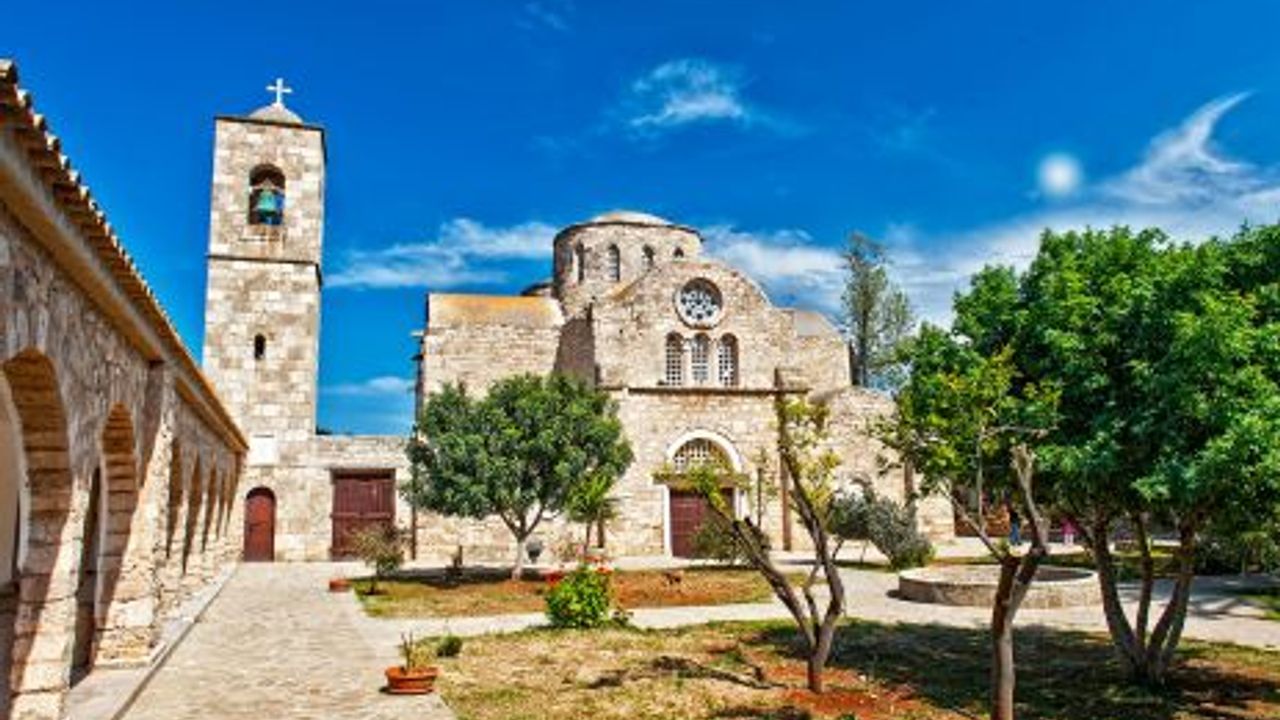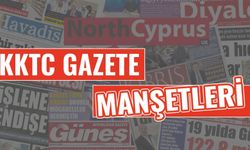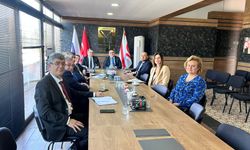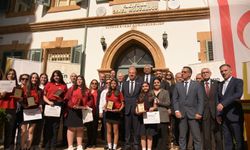The St. Barnabas Monastery and Museum, an architectural sight that leaves its visitors amazed, is located at the west tip of the Necropolis of Salamis.
The St. Barnabas Monastery, located in the vicinity of the village of Tuzla in Famagusta, is nowadays visited by many as a Museum of Icons and Archaeology.
The monastery is open daily between the hours of 8:00 am and 7:00 pm and it is a popular destination. Among those who pay a visit are not only Greek Cypriots, but also Italians, Polish, Germans, British and Russians.
The entrance fee for the monastery, which is maintained by the Department of Antiquities and Museums, is 7 Turkish Liras for adults and 2 Turkish Liras for students.
Since the opening of the borders between the North and South in 2003, Greek Cypriots have held masses in the monastery twice a year.
The Icon and Archaeology Museum, whose architecture amazes those who see it, has been named after the son of a Jewish family, called St. Barnabas.
As the largest museum in the area, the St. Barnabas Church sheds light on the history of Cyprus. The artefacts displayed in it, which range from the Neolithic period to the Roman period, are definitely worth a visit.
The Story of St. Barnabas
St. Barnabas is the son of a Jewish family, born in Salamis.
After completing his studies in Jerusalem, he returns back to the island and in 45 AD, together with St. Paul, begins to work as a missionary for Christianity.
His activities are not welcome by his fellow countrymen, the Jews, and he is eventually murdered by them. His body is tied to a stone and hid in a marshland, to be dumped into the sea later at night.
Some students of St. Barnabas’s, who witness the incident, secretly steal his body and bury it in a cave under a carob tree to the west of Salamis, together with the manuscript of Matthew's Gospel, which St. Barnabas always carried around with him.
When the Jews find out about what the students have done, they chase them all the way to the Paraskevi Caves near Nicosia, where they lose sight of them. The students manage to escape to Egypt via the Karavostasi port. The whereabouts of the body remains unknown to all until 432 years later, Archbishop Anthemios sees Barnabas and his burial site in his dream and orders for the tomb to be opened.
The body is recognized as belonging to St. Barnabas thanks to the St. Mathews Gospel on his chest. Archbishop Anthemios takes both the gospel and the remains of St. Barnabas and presents them to Emperor Zeno in Constantinople. As a result, Emperor Zeno grants autonomy to the Church of Cyprus and makes a donation for a monastery to be built at the burial site of St. Barnabas.
The Monastery is built on 477 AD. The building receives its present structure in 1756, on the orders of Archbishop Philotheos (during the Ottoman rule). After the 1974 Peace Operation, the Monastery and the Church remaines open thanks to the voluntary services of three brother priests.
However, when the priest brothers decide to move to the South in 1976, due to age and health problems, the place is preserved in its original form and opened to visitors. Various icons, wall paintings and other items are displayed in the Church within the Monastery precincts.
The Restoration
The St. Barnabas Monsartery and Church has been renovated in August 1991 under the supervision of the Department of Antiquities and Museums.
Together with the Monastery, the Church, where the icons are displayed, has also been renovated to become a more comprehensive Icon Museum with the addition of new icons. The rooms of the Monastery have been re-arranged into an Archaeological Museum and the rooms at the entrance have been transformed into the administrative unit.
In addition, the inner yard has been paved with stones and a new arrangement has been made within it.






